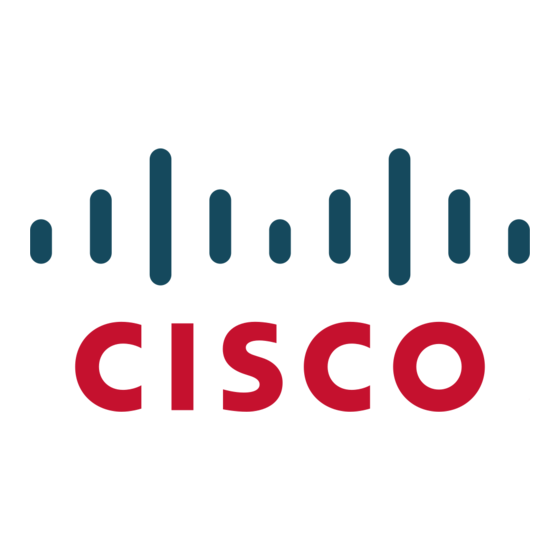Cisco 6513 - Catalyst Switch Datasheet - Page 14
Browse online or download pdf Datasheet for Switch Cisco 6513 - Catalyst Switch. Cisco 6513 - Catalyst Switch 30 pages. Catalyst 6500 series chassis and module power and heat values
Also for Cisco 6513 - Catalyst Switch: Power Manual (4 pages), Technical Information (16 pages)

Telephony Services Modules
• Communications Media Module (CMM)—Provides flexible, high-density T1 and E1 gateways, allowing
organizations to connect their existing time-division multiplexing (TDM) networks to their IP communications
networks, and providing connectivity to the PSTN. For more information, visit:
http://www.cisco.com/en/US/products/hw/modules/ps3115/products_data_sheet09 186a00800e9c1f.html
Wireless Services Modules
• Wireless LAN Services Module (WLSM)—Enables campus-wide fast secure WLAN roaming within and across
IP subnets, enhances WLAN security (e.g. user group segmentation and Catalyst integrated security services),
and simplifies WLAN deployment and management.
Switch Fabric Modules
Designed to support distributed forwarding for interface modules that have distributed forwarding capability,
the Cisco Catalyst 6500 Series SFM or SFM2, in combination with the Cisco Catalyst 6500 Series Supervisor Engine
2-MSFC2 and DFCs on interface modules, increases available system bandwidth from 32 to 256 Gbps. The
SFM/SFM2 supports the Cisco Catalyst 6500 CEF256 and dCEF256 interface modules.
Designed to support new interface modules with 720 Gbps forwarding capabilities, the Supervisor Engine 720's
onboard switch fabric increases available bandwidth to 720 Gbps and enables packet forwarding rates up to
400 Mpps. By using auto-sensing and auto-negotiation, the Supervisor 720 switch fabric is fully interoperable with
the 8- and 16-Gbps switch fabric interconnections used by the CEF256 and dCEF256 interface modules. When a
CEF256 or dCEF256 interface module is detected, the switch fabric will automatically connect those modules by
offering 8-16 Gbps of bandwidth to each module, as applicable.
How Cisco Express Forwarding Works
Cisco Express Forwarding (CEF) is a Layer 3 technology that provides increased forwarding scalability
and performance to handle many short-duration traffic flows common in today's enterprise and service provider
networks. To meet the needs of environments handling large amounts of short-flow, Web-based, or highly interactive
types of traffic, CEF forwards all packets in hardware, and maintains its forwarding rate completely independent
of the number of flows going though the switch.
On the Cisco Catalyst 6500 Series, the CEF Layer 3 forwarding engine is located centrally on the supervisor engine's
PFC2 or PFC3—the same device that performs hardware-based Layer 2 and 3 forwarding, ACL checking, QoS
policing and marking, and NetFlow statistics gathering.
Using the routing table that Cisco IOS Software builds to define configured interfaces and routing protocols, the CEF
architecture creates CEF tables and downloads them into the hardware-forwarding engine before any user traffic
is sent through the switch. The CEF architecture places only the routing prefixes in its CEF tables—the only
information it requires to make the Layer 3 forwarding decisions—relying on the routing protocols to do route
selection. By performing a simple CEF table lookup, the switch forwards packets at wire-rate, independent
of the number of flows transiting the switch.
CEF-based forwarding requirements: Requires a Cisco Catalyst Supervisor Engine 2 or Catalyst Supervisor
Engine 720.
All contents are Copyright © 1992–2004 Cisco Systems, Inc. All rights reserved. Important Notices and Privacy Statement.
Cisco Systems, Inc.
Page 14 of 29
